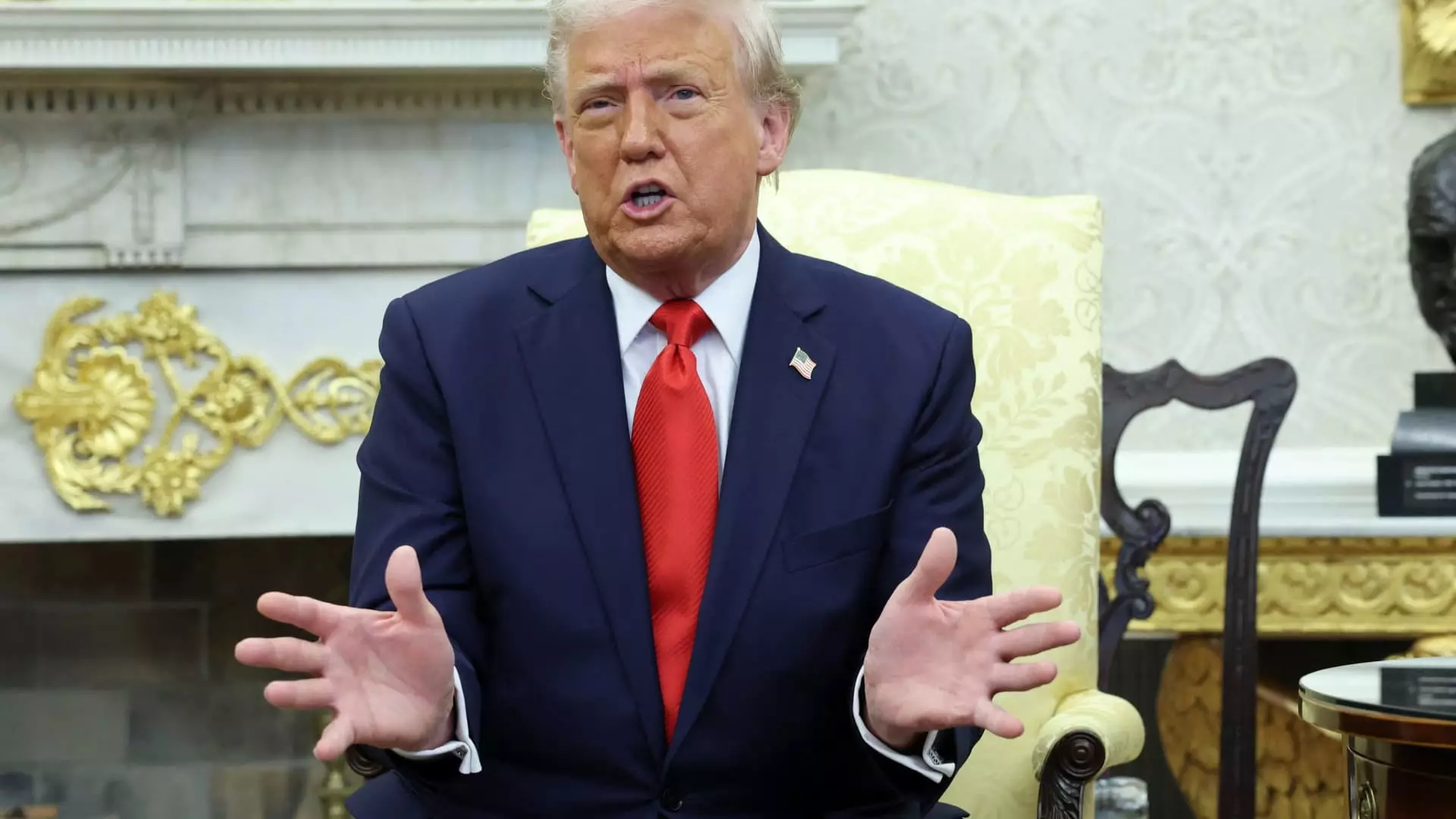The recent success of Wall Street banks paints a picture that is both exciting and concerning. In the wake of President Donald Trump’s entry into office, Goldman Sachs, Morgan Stanley, JPMorgan Chase, and Bank of America collectively reported their most lucrative earnings in equities trading ever. Shockingly, these banks generated about $16.3 billion in trading revenue during the first quarter of this year—a staggering 33% increase from the previous year, surpassing even periods of economic upheaval like the 2008 financial crisis and the 2020 pandemic. While many would herald this financial windfall as evidence of Wall Street’s resilience and ingenuity, there’s a deeper narrative worth dissecting.
At first glance, one might celebrate this financial coup as a marker of robust market activity. Analysts deemed these profits “spectacular” and “extraordinary,” and rightly so; on a surface level, these figures suggest an environment bursting at the seams with economic vitality. However, this enthusiasm overlooks the fundamental instability embedded in these gains, which stem not from a revitalized economy but rather from a chaotic political landscape. The volatility, initially unleashed by Trump’s policies on tariffs and international trade, has transformed a seemingly straightforward financial narrative into a landscape fraught with uncertainty.
The Illusion of Stability
As the chorus of jubilation surrounding trading revenue swells, let’s take a moment to probe deeper into the consequences of relying on this volatility-filled activity. The high trading revenue figures might provide short-term relief for big banks, but they accentuate a more pernicious trend: the fragility of stability. As JPMorgan Chase’s executives ominously predict an unemployment rise to 5.8% later this year—up from 4.2%—we are left questioning whether these financial gains are merely a fleeting mirage.
The problem arises when one considers how the infrastructure of these financial behemoths is evolving. With the focus on trading revenue, some argue that investment banks have strayed from their original role of facilitating economic growth toward a model heavily reliant on maintaining the status quo of volatility for profit. In this light, the future looks tumultuous, where profits are not derived from genuine economic expansion but rather from a continuous cycle of uncertainty. This reality brings to the forefront the ethical dilemmas surrounding a banking system that could benefit more from instability than stability—a twist that is unsettling at best.
The Dark Side of Dependency on Trading Growth
With banks experiencing unprecedented trading revenue, one has to ask: what happens when the music stops? As investment banking remains muted—with corporate leaders hesitating to make strategic investment decisions amid the uncertainty—Wall Street’s focus on trading has effectively put it in a precarious position. This dependency on trading profits raises questions about the long-term viability of this business model.
While Wall Street may be thriving, it is essential to consider the repercussions for other sectors of the economy. Regional banks, which lack the luxury of substantial trading operations, are increasingly at a disadvantage, making it difficult for them to manage loan growth amid rising defaults. This disparity signals not only an imbalance in the banking sector but also a risk of erosion in local economies that rely on these institutions.
Yet, the impact of such volatility is broader. As institutional investors scramble to navigate the wild currents of a chaotic market, their decisions could precipitate even greater instability. If these investor trends continue, they risk creating an environment where the stock market functions as a casino for the wealthy rather than as a facilitator for economic growth and stability.
The Future of Wall Street’s Trading Titans
As we peer into the crystal ball of market projections amid this volatile climate, the ongoing changes signal a significant evolution for Wall Street since the last financial crisis. Under the guidance of executives like Morgan Stanley’s Ted Pick and others, investment banks are moving toward a model that emphasizes high-frequency trading and speedy execution of trades, favoring the creation of a profit-driven ecosystem devoid of deeper contributions to economic health.
By shifting the focus toward servicing clients in a frenetic trading environment, these financial giants build a façade of operational efficiency while masking the underlying issues that could jeopardize their success. As we gaze forward into a post-Trump market landscape, the nostalgia for stability might become a distant memory—a casualty of a banking system that has prioritized immediate gains over long-term responsibility.
In light of these dynamics, it is critical that policymakers and regulators pay close attention to Wall Street’s trajectory. Without an appropriate balance that safeguards against excessive risk, the consequences could ripple far beyond the confines of trading revenue—ultimately affecting the very backbone of the economy. The question remains: will Wall Street’s giants become the architects of their downfall, all in pursuit of profits born from chaos?

